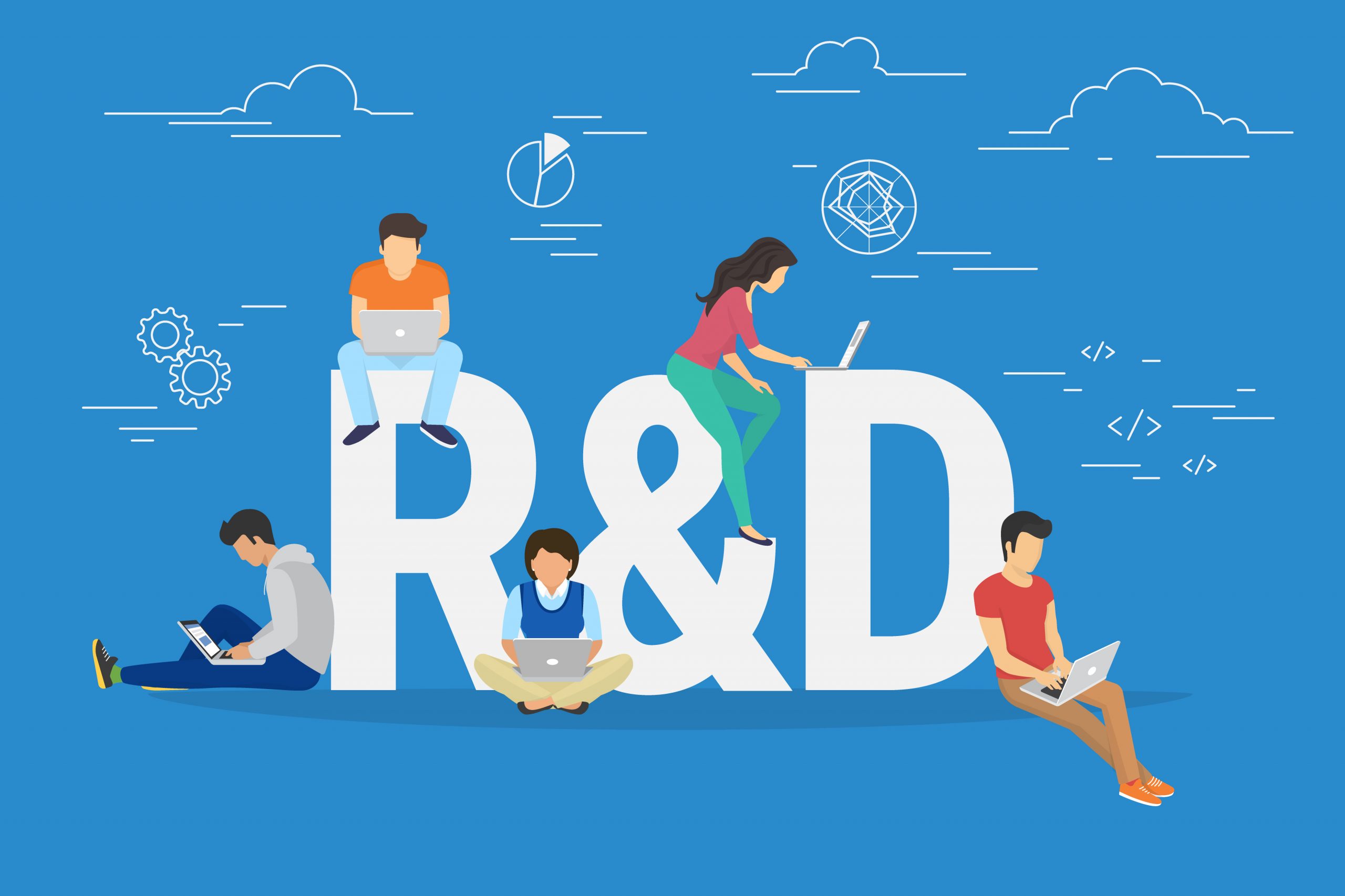In a world accelerating at an unprecedented pace, Advanced Research & Development (R&D) stands as the invisible engine driving progress across every conceivable sector. It’s the relentless pursuit of the unknown, the disciplined exploration of novel concepts, and the meticulous refinement of nascent ideas into tangible innovations that redefine industries, enhance lives, and secure competitive advantage. This isn’t just about incremental improvements; it’s about the deep, often foundational, work that leads to disruptive technologies, new scientific paradigms, and entirely new markets. For nations, corporations, and even small startups, investing in Advanced R&D isn’t merely an expenditure; it’s a strategic imperative, a commitment to future relevance and sustained growth.
Understanding the R&D Spectrum

To fully grasp the significance of Advanced R&D, it’s crucial to differentiate it from other forms of research. The R&D landscape exists on a spectrum, each phase critical to the overall innovation pipeline.
A. Basic Research (Pure Research):
- Fundamental Inquiry: This is the pursuit of knowledge for its own sake, without an immediate practical application in mind. It seeks to understand fundamental principles and phenomena.
- Long-Term Horizon: The outcomes are often unpredictable, and the commercialization pathway may not be clear for decades, if ever.
- Examples: Discovering a new subatomic particle, understanding the precise mechanisms of cellular division, or mapping the human genome. This forms the bedrock upon which all other R&D is built.
B. Applied Research:
- Specific Objective: This type of research is conducted with a specific practical objective in mind. It aims to solve a particular problem or develop a specific product/process.
- Translational Focus: It translates the findings of basic research into concepts that have potential for real-world application.
- Examples: Developing a more efficient solar cell material, researching new drug compounds for a specific disease, or designing a more robust algorithm for data analysis.
C. Experimental Development:
- Systematic Application: This is the systematic work, drawing on knowledge gained from research and practical experience, directed at producing new products or processes or improving existing ones.
- Prototyping and Testing: It involves building prototypes, conducting trials, and refining designs to prepare them for production or commercial use.
- Examples: Building and testing a prototype electric vehicle, developing a new manufacturing process for a specialized component, or creating a beta version of a novel software application.
D. Advanced R&D:
- Bridging Basic and Applied: Advanced R&D often bridges the gap between basic research and the initial stages of applied development. It involves exploring novel concepts and technologies that might be too speculative for immediate commercial application but hold immense long-term potential.
- High Risk, High Reward: It’s characterized by higher technical risk and uncertainty than standard applied research, but with the potential for genuinely disruptive breakthroughs.
- Interdisciplinary: Often involves combining knowledge from disparate fields to create entirely new solutions.
- Examples: Research into quantum computing algorithms, gene-editing technologies like CRISPR for human therapy, next-generation battery chemistries beyond current lithium-ion, or brain-computer interface development. This is where the truly future-proof technology often originates.
Pillars of Advanced R&D
Several key elements underpin successful Advanced R&D, acting as catalysts that transform theoretical possibilities into tangible realities.
A. Interdisciplinary Collaboration:
- Breaking Silos: The most profound advancements rarely occur within single disciplines. Advanced R&D thrives on collaboration between scientists, engineers, designers, and even ethicists from diverse fields.
- Cross-Pollination of Ideas: Bringing together experts from, say, material science, artificial intelligence, and biomechanics can lead to unforeseen synergies and novel solutions that no single field could achieve alone.
- Global Networks: International collaboration among research institutions, universities, and private companies accelerates progress by sharing resources, data, and expertise.
B. Significant and Sustained Investment:
- Long-Term Horizon: Advanced R&D is a long game. It requires substantial, consistent funding, as breakthroughs can take years or even decades to materialize. Impatient capital often stifles true innovation.
- Government Funding: Public funding bodies play a crucial role in supporting basic and early-stage advanced research, which is often too risky for private enterprise alone.
- Private Sector Commitment: Forward-thinking corporations allocate significant portions of their budgets to Advanced R&D, understanding it’s essential for their future competitive edge.
- Venture Capital and Strategic Partnerships: Specialized venture capital firms invest in high-risk, high-reward startup inovatif that are pushing the boundaries of technology.
C. Cutting-Edge Infrastructure and Resources:
- State-of-the-Art Labs: Access to advanced laboratories, high-performance computing, specialized equipment (e.g., electron microscopes, particle accelerators, cleanrooms), and vast datasets is indispensable.
- Data Analytics and AI: The ability to collect, process, and analyze massive amounts of data using AI-driven discoveries and machine learning algorithms is critical for identifying patterns, predicting outcomes, and accelerating discovery.
- Simulation and Modeling: Advanced computational tools allow researchers to model complex systems and simulate experiments, reducing the need for costly and time-consuming physical trials.
D. Talent and Expertise:
- Top Minds: Advanced R&D requires highly skilled and creative individuals with deep expertise in their respective fields, coupled with a willingness to explore uncharted territory.
- Interdisciplinary Training: Fostering educational programs that encourage interdisciplinary thinking and problem-solving is vital for nurturing the next generation of innovators.
- Culture of Experimentation and Failure: A supportive environment where calculated risks are encouraged and “failures” are viewed as learning opportunities, not setbacks, is paramount.
E. Robust Intellectual Property (IP) Strategy:
- Protection of Discoveries: A strong IP strategy (patents, copyrights, trade secrets) is essential to protect the fruits of Advanced R&D, enabling organizations to commercialize their pioneering solutions and recoup their substantial investments.
- Licensing and Partnerships: IP can also be a valuable asset for licensing agreements and strategic partnerships, further accelerating the dissemination and application of new technologies.
Where Advanced R&D Is Reshaping Our World

The influence of Advanced R&D is pervasive, driving monumental changes across a multitude of sectors, leading to next-gen breakthroughs that seemed impossible just a few years ago.
A. Healthcare and Biotechnology:
- Gene Editing (CRISPR): Revolutionizing the treatment of genetic diseases, offering the potential to correct faulty genes. Biotech frontier explodes with possibilities.
- Personalized Medicine: Developing treatments tailored to an individual’s genetic makeup, leading to more effective and less toxic therapies.
- mRNA Vaccines: A direct outcome of decades of advanced research, demonstrating unprecedented speed and efficacy in combating global health crises.
- Organoids and Tissue Engineering: Growing miniature organs or tissues in labs for disease modeling, drug testing, and potentially future transplantation.
B. Artificial Intelligence (AI) and Machine Learning (ML):
- Generative AI: Beyond analytical AI, this focuses on creating new content (text, images, code), pushing the boundaries of human-computer interaction. AI Drives Future Breakthroughs here.
- Reinforcement Learning: Enabling AI systems to learn optimal behaviors through trial and error, critical for robotics and autonomous systems.
- Explainable AI (XAI): Research focused on making AI decisions transparent and understandable, addressing ethical and trust issues.
- AI for Scientific Discovery: Using AI to accelerate material discovery, drug design, and understanding complex scientific data.
C. Sustainable Energy and Climate Solutions:
- Next-Generation Batteries: Developing solid-state batteries, flow batteries, and other chemistries with higher energy density, faster charging, and longer lifespans for EVs and grid storage. Sustainable Solutions Emerge from these efforts.
- Advanced Nuclear Technologies: Research into small modular reactors (SMRs) and fusion power offers the promise of clean, abundant energy.
- Carbon Capture and Utilization: Innovations in technologies to capture carbon dioxide from the atmosphere or industrial emissions and convert it into useful products.
- Efficient Solar Materials: Developing new photovoltaic materials that are more efficient, cheaper, and easier to manufacture.
D. Quantum Technologies:
- Quantum Computing: Building computers that leverage quantum mechanics to solve problems intractable for classical computers, with implications for drug discovery, material science, and cryptography. Quantum Leap Unlocked by this research.
- Quantum Communication: Developing ultra-secure communication networks based on quantum principles.
- Quantum Sensors: Creating incredibly sensitive sensors for medical imaging, navigation, and fundamental physics research.
E. Advanced Materials Science:
- Metamaterials: Engineered materials with properties not found in nature, designed to manipulate light, sound, or heat in novel ways (e.g., invisibility cloaks, super-lenses).
- Self-Healing Materials: Materials designed to autonomously repair damage, extending lifespan and reducing maintenance costs.
- Lightweight Composites: Developing stronger, lighter materials for aerospace, automotive, and construction, improving fuel efficiency and performance.
F. Robotics and Autonomous Systems:
- Humanoid Robotics: Advanced R&D focuses on creating robots with more human-like dexterity, perception, and interaction capabilities.
- Swarm Robotics: Developing systems where multiple simple robots cooperate to achieve complex tasks.
- Autonomous Navigation in Unstructured Environments: Enabling robots and vehicles to operate reliably in complex, unpredictable real-world settings.
The Road Ahead of Advanced R&D
The landscape of Advanced R&D is constantly evolving, driven by new scientific insights and global challenges. Several trends are shaping its future trajectory.
A. Convergence of Technologies:
- Synergistic Innovation: The most significant future breakthroughs will likely emerge at the intersection of seemingly disparate fields – e.g., AI combined with biotechnology (AI for drug discovery), or quantum computing applied to material science.
- Blurring Boundaries: The traditional lines between disciplines like biology, computing, engineering, and materials science will continue to blur, fostering true interdisciplinary breakthroughs.
B. Ethical Considerations and Responsible Innovation:
- AI Ethics: As AI becomes more powerful, Advanced R&D will increasingly focus on developing ethical AI, ensuring fairness, transparency, and accountability.
- Bioethics: Advances in gene editing and synthetic biology necessitate robust ethical frameworks and public discourse to guide their responsible development and application.
- Sustainability by Design: Integrating environmental and social impact considerations from the very earliest stages of research and development, ensuring innovations contribute positively to society.
C. Democratization of R&D Tools:
- Open Science Initiatives: Greater sharing of research data, methodologies, and open-source tools accelerates scientific discovery and allows a broader community to contribute.
- Citizen Science: Engaging the public in scientific research, leveraging collective intelligence for data collection and analysis.
- Accessible Technologies: As advanced tools (e.g., 3D printers, low-cost sensors) become more accessible, innovation can flourish in unexpected places, beyond traditional research institutions.
D. Focus on Resilience and Adaptability:
- Climate Change Solutions: Advanced R&D will increasingly be directed towards developing technologies that help mitigate climate change and adapt to its impacts (e.g., resilient infrastructure, drought-resistant crops).
- Pandemic Preparedness: Ongoing research into rapid vaccine development, antiviral therapies, and advanced diagnostic tools to better prepare for future health crises.
- Supply Chain Resilience: Innovations in manufacturing processes, automation, and distributed production models to create more robust and flexible supply chains.
E. Enhanced Human-Machine Interfaces:
- Brain-Computer Interfaces (BCI): Research into direct communication pathways between the brain and external devices, with applications in prosthetics, communication for disabled individuals, and potentially augmented cognition.
- Augmented Reality (AR) and Virtual Reality (VR): Beyond gaming, Advanced R&D focuses on using AR/VR for complex training simulations, remote collaboration, and immersive data visualization, transforming how humans interact with digital information.
Conclusion
Advanced R&D is more than just a departmental function; it’s a testament to human curiosity, perseverance, and ingenuity. It’s the engine that powers our progress, transforming abstract scientific principles into tangible solutions that address the world’s most pressing challenges and unlock unimagined possibilities. From the intricate molecular dance of gene editing to the vast computational power of quantum systems, the frontiers of knowledge are constantly expanding, driven by dedicated researchers and sustained investment.
For businesses, nations, and individuals, understanding and participating in this relentless pursuit of next-gen breakthroughs is critical. It determines not just competitive advantage, but societal well-being and our collective future. The commitment to Advanced R&D today is the fundamental investment in fueling tomorrow’s breakthroughs, ensuring that innovation continues to be the driving force behind a better, more sustainable, and technologically advanced world. The horizon of human potential, shaped by Advanced R&D, is continuously unfolding, promising a future that is as exciting as it is transformative.













